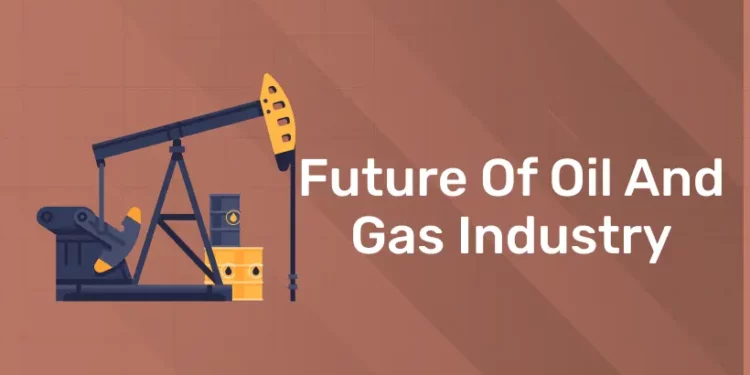Table of Contents
The oil and gas industry is facing increasing demands to clarify the implications of energy transitions, and to explain the contributions that they can make to reduce the greenhouse gas emissions and to achieve the goals.
The increasing social and environmental pressures on many oil and gas companies raise complex questions about the role of these oil and gas in a changing energy economy, and the position of these companies in the societies in which they operate.
But the core question, against a backdrop of rising emissions, is relatively simple: should today’s oil and gas companies be viewed only as part of the problem, or could they also be crucial in solving it?
Start your career in Oil and Gas field!! Join Now!
Recap 2020
Demand has partially recovered since April 2020 but still ended the year approximately 9 million barrels per day (MMb/d) below the 2019 level, with continued COVID-19-related lockdown measures in January 2021 keeping it around 6 MMb/d lower than January 2019.
Supply remained strong and healthy until April 2020 and then dropped by 13 to 14 MMb/d in May, driven by OPEC+1 cuts and shut-ins (that have mostly returned to the market), thus showing the willingness of OPEC+ to continue interventions. The market saw an oversupply of approximately 20 MMb/d in April 2020, pushing prices to $18 per barrel of oil (bbl) for the month, before recovering to $50/bbl by the end of the year.
OECD commercial inventories remain at high levels and, although we have seen draws over the past months, they are still 150,000 barrels above pre-COVID-19 levels.
The Global Energy Perspective 2023
1: What is the primary purpose of a refinery in the oil and gas industry?
The Global Energy Perspective 2023 models the outlook for demand and supply of energy commodities across a 1.5°C pathway, aligned with the Paris Agreement, and four bottom-up energy transition scenarios. These energy transition scenarios examine outcomes ranging from warming of 1.6°C to 2.9°C by 2100. These scenarios sketch a range of outcomes based on varying underlying assumptions. For example, about the pace of technological progress and the level of policy enforcement. The scenarios are shaped by more than 400 drivers across sectors, technologies, policies, costs and fuels. It also serve as a fact base to inform decision makers on the challenges to be overcome to enable the energy transition.
Growing global momentum could accelerate the energy transition, which was demonstrated by the UAE Consensus, and released in December 2023, that calls on Parties to make a just and orderly transition away from fossil fuels. Nevertheless, analysis from multiple sources, suggests that conventional fossil fuels are likely to remain a part of the energy mix to 2050, even in a 1.5° pathway, and may act as a bridge for an orderly transition. Therefore, decarbonizing the fossil fuel system and substantially reducing emissions, including methane, is a key area of focus. Within that evolving context, this blog examines the potential road ahead for oil according to our sector-based adoption models.
The energy transition is expected to change the trajectory of global oil demand. According to analysis, demand could fall by up to 50 percent by 2050, depending on the scenario modelled. However, even under the most accelerated scenario, the analysis shows that investment in a broad energy mix, would continue for a period in order to shore-up security of supply and meet demand across the range of scenarios, including oil and gas, particularly in end-use sectors such as chemicals, aviation, and heavy trucking. As a result of this, our bottom-up energy transition scenarios consistently see a certain amount of new field development continuing in order to meet overall energy demand, offset rapid production declines, and also to meet transition energy shortfalls. Further, our scenarios see investment in the oil and gas sector, both for fuel and non-fuel purposes, remaining steady through 2030 as the world navigates an orderly and affordable transition.
Get Certified! Get Confident! Join our Oil and Gas Course!
2024 oil and gas industry outlook
The industry is expected to have a good start in 2024 due to its strong financial position and high oil prices, barring further deterioration in the macroeconomic environment. This strength of the industry will likely enable it to finance both investments and dividends, and thus support its disciplined capital program strategy. The global upstream industry, is projected to maintain its 2023 hydrocarbon investment level of about US$580 billion (an increase of 11% year over year) and generate over US$800 billion in free cash flows in 2024.
However, this continued financial strength of the industry is likely to raise expectations of investors, regulators, and other stakeholders, who may expect further progress in emissions reduction, augmented investments in low-carbon energies, and amplified returns for shareholders. These expectations may serve as a driving force, urging companies to focus even further on both emission reduction and economic performance. The 2024 oil and gas industry explores five trends and industry drivers that are expected to play an important role in shaping the strategies and priorities of oil and gas companies in the upcoming year.
- Energy transition: Prudently allocating capital and also effectively executing clean energy policies.
- Critical minerals: Participating in the energy transition by securing a position in the supply chain to tackle perceived end-market risks.
- Global energy trade: Embracing the growing dynamism in energy trade and relationships
- Technology adoption: Embracing the power of generative AI for innovative solutions and new value creation
- Downstream industry: Restructuring the refining industry in alignment with evolving and emerging demand patterns
Short-term up to 2025
Oil demand is expected to return to 2019 levels by late 2021 to early 2022, depending on the duration of lockdowns and the speed of GDP recovery. Based on our Global Energy Perspective reference-case demand insights, current OPEC+ intervention will be sufficient to help balance the market in 2021, while prices will remain at a sustained level of $50 to $55/bbl through to 2025.
If GDP growth recovers faster than expected, we may see a near-term price increase at more than $55/bbl. However, if demand recovers slower than expected or if OPEC+ stops cutting output, prices could be depressed or highly volatile for the next three to four years.
Long-term up to 2040
Long-term equilibrium oil prices have decreased by $10 to $15/bbl compared with pre-COVID-19 outlooks, as driven by a flattening cost curve and lower demand. Under an OPEC-control scenario, in which OPEC maintains its market share, we see a $50 to $60/bbl equilibrium price range in the long term, fueling 10 to 11 MMb/d US shale oil and 11 to 13 MMb/d deepwater production from pre-financial-investment-decision (FID) projects.
While most of the offshore-oil-producing regions will be under pressure in an accelerated energy-transition scenario, the sector will still require new production of nearly 23 MMb/d to meet demand after 2030.
Start your career in Oil and Gas field!! Join Now!
Conclusion
The oil and gas industry faces the strategic challenge of balancing short-term returns with its long-term licence to operate. Societies are simultaneously demanding energy services and also reductions in emissions. Oil and gas companies have been proficient at delivering the fuels that form the bedrock of today’s energy system; the question that they now face is whether they can help deliver climate solutions.
The analysis in this report highlights that this could be possible if the oil and gas industry takes the necessary steps. As such, it opens a way – which some companies are already following – for the oil and gas industry to engage with the “grand coalition” that the IEA considers essential to tackle climate change. This effort would be greatly enhanced if more oil and gas companies were firmly and fully onboard. The costs of developing low-carbon technologies represent an investment in companies’ ability to prosper over the long term.










